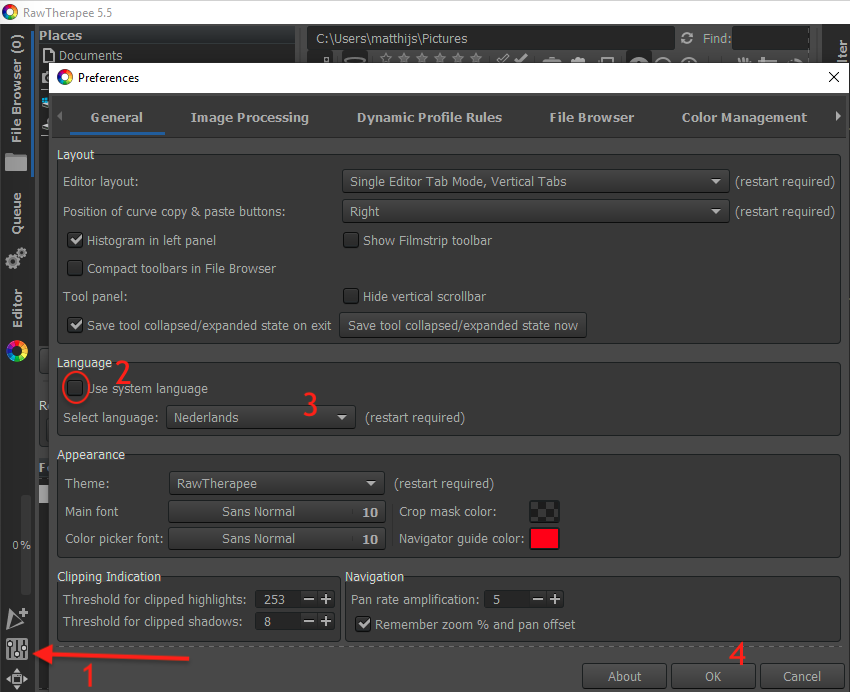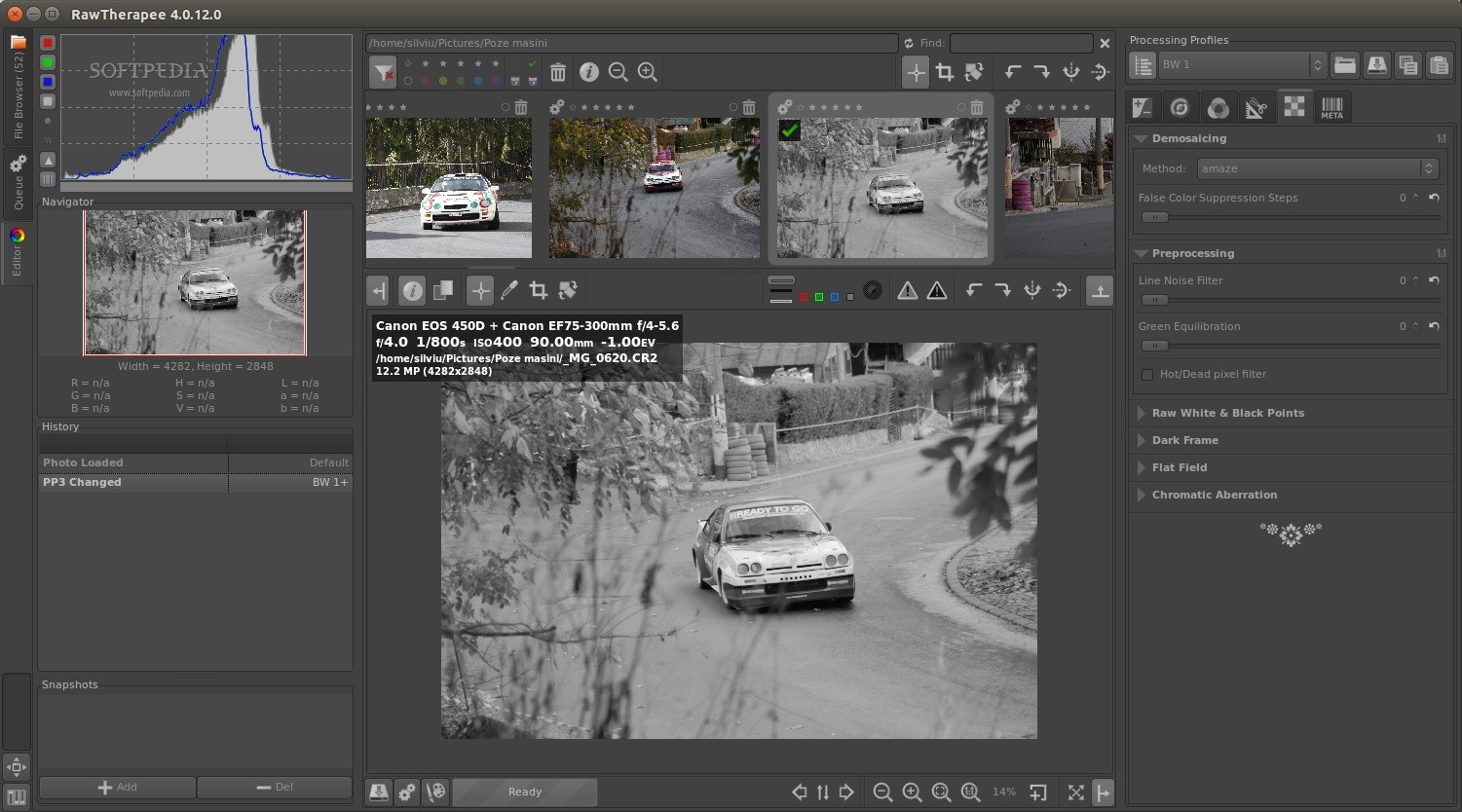
- RAWTHERAPEE LINUX USE GPU DRIVERS
- RAWTHERAPEE LINUX USE GPU UPDATE
- RAWTHERAPEE LINUX USE GPU SOFTWARE
There is an Advanced tab in the app for detailed photo editing. The program offers flat field correction, hot/dead pixel correction, multiple-frame Raw files, dark frame subtraction, and pixel-shift compositing with automatic ghost masking. DNG files with a high dynamic range can also be edited. The app’s non-destructive 32-bit (floating point) processing engine and contemporary demosaicing methods are used for raw image editing. In addition to a Pixel Shift demosaicing approach that enables an average of all frames to handle motion over many frames, the Demosaicing tool now includes new dual-demosaicing methods. The user can utilise this tool to decide whether channels should be automatically balanced by the app or whether the values the camera captured at the moment of capture should be used in their place. Some updates have been made to the Raw tab of the software, including the addition of a Pre-process White Balance tool.


The former auto white balance feature is still available but now goes by the moniker “RGB grey.” The Film Negative tool has been enhanced, and now supports photographs that are not in raw format. Temperature correlation is a new automatic white balancing technique found in the Color tab. The Haze Removal tool has also received a new saturation slider. The Spot Removal tool, which can be found in the Details page of the app, allows you to remove dust particles and other minute items from your photographs. The latest release’s many new features and enhanced camera compatibility.
RAWTHERAPEE LINUX USE GPU UPDATE
The significant update was issued more than two years after version 5.8.
RAWTHERAPEE LINUX USE GPU SOFTWARE
Version 5.9 of the free software RawTherapee has just been released. With the free alternative RawTherapee, photographers may edit Raw files from a variety of cameras on Linux, macOS, and Windows. "We aren't going to stop you from running Devuan with X11 and twm and no sound server, but if your desktop tears, screen capture is dog slow, your media keys stop working one day, your speakers sound terrible and tinny or don't even work at all by default (once we ship that), VSync is broken, and your display looks duller and the colors muted, don't come to us asking for help."Īlong with several other follow-up posts encouraging Asahi Linux users to focus on Wayland and less on X.Org Server usage.The majority of Raw photo editors charge regular membership fees or demand customers to buy user licences, which can run into the hundreds of dollars. At that point Xorg will be relegated to SDDM, and once a native Wayland release of that finally happens, we won't be shipping any usage of the X server any more."
RAWTHERAPEE LINUX USE GPU DRIVERS
The reverse is true now that we have GPU drivers, and we will be switching all default-Xorg-KDE users to default-Wayland in an update (along with promoting the GPU drivers to the default builds) really soon. The only reason we shipped Xorg by default is that Wayland compositors were slower with software rendering. We won't be working on any features or non-desktop-breaking bugs beyond that. showing a working desktop), but that's it. We do expect Xorg to continue to function for the bare essentials (i.e. The major players in desktop Linux have decided it's time to move on from Xorg, and if you want to go against the tide you're on your own. Yes, not every random app and feature you use on Xorg will have a Wayland equivalent. But for anything that goes beyond "displaying windows" (compositors, IMEs, input management, desktop environments, etc.), please use native Wayland applications, since XWayland will never integrate properly for those things (by design).

XWayland will continue to be supported for legacy client apps, and we do plan to spend time on optimizing the XWayland experience. It's pointless to try to support it well today on a new platform. Distributions and major desktop environments are already dropping Xorg support. That doesn't mean Xorg isn't broken, it means those platforms have spent years working around Xorg's failings. Yes, some Xorg things might work better on other platforms. We strive for a quality desktop on Apple Silicon machines, but we have to pick and choose our battles very carefully, because we can't single-handedly fix all the problems in the entire Linux desktop ecosystem. It's all but unmaintained, broken in fundamental ways that cannot be fixed, unsuited to modern display hardware (like these machines), and we absolutely do not have the bandwidth to spend time on it. "Please, please stop using Xorg with Asahi Linux. Writing what many other Linux distribution vendors/developers would like to say but generally have not publicly and directly expressed, Hector Martin wrote on Mastodon for Asahi Linux users to stop using an X.Org Server. Asahi Linux lead developer Hector Martin issued a lengthy post encouraging users of this Apple Silicon focused Linux distribution to stop using X.Org as Wayland is the future.


 0 kommentar(er)
0 kommentar(er)
